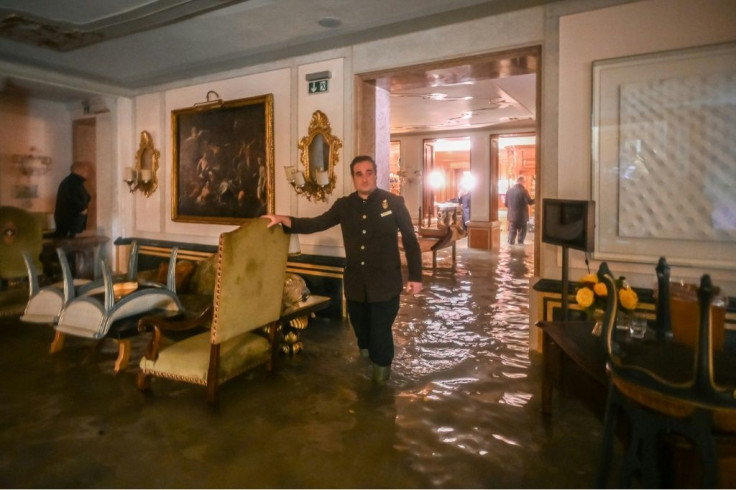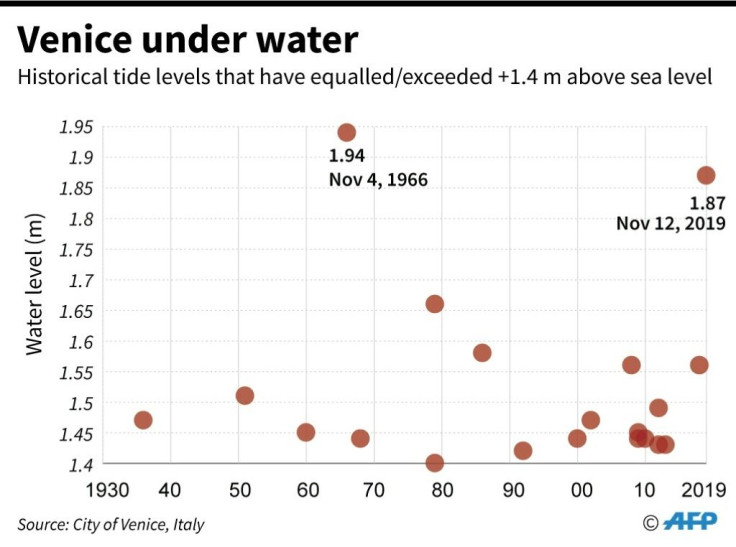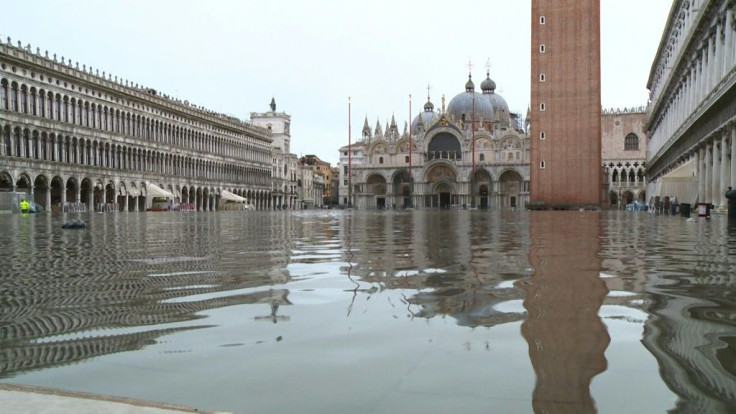Flooding Drowns St Mark's Priceless Mosaics In Sewage

Dirty water swirls around marble tombs inside the 12th century crypt of St Mark's Basilica in Venice, which suffered untold damage when an unprecedented high tide swept through the city.
Pumps work overtime to clear the seawater from around the altar and under the pink and white stone arches, as the historic monument's custodians look on in sadness and anger.
"We're talking about millions of euros worth of damage," said Carlo Alberto Tesserin, First Procurator of the Basilica, who is the president of a team responsible for managing the historic site.
"We said last year that the Basilica had aged 20 years in a high tide. It risks having aged much more than that in this one," he told AFP.
The exceptionally intense "acqua alta," or high water, peaked at 1.87 metres (six feet) late Tuesday, forcing stranded tourists to wade through rapidly rising waters in the dark in search of safety as the flood alarm rang out.

Only once since records began in 1923 has the water crept even higher, reaching 1.94 metres in 1966.
As winds whipped the waves on the famous square, transformed into a lake, the waters surged into the Basilica with a force "never seen before, not even in the 1966 flood," Tesserin said.
Sewage and drowned rats could be seen floating in the city's pungent alleyways.

Warnings a year ago about potential damage from increasingly high tides "went unheeded," he said.
Thousands of tourists flock to the Italo-Byzantine monument every day, gazing up at the shimmering gold ground mosaics that decorate its majestic domes or pausing in front of the venerated tomb of St Mark.

It is particularly at risk, sitting as it does in one of the lowest parts of the city.
"The damage we see now is nothing compared to that within the walls. The salt enters the marble, the bricks, everywhere," Tesserin said.

Italy's culture minister Dario Franceschini said Tuesday the government would cough up an as-yet unspecified amount of funding to help preserve the site in the UNESCO city.
"The experts gave us ample warning. They weren't listened to," the procurator said.
The city stands on wooden piles driven by their thousands into the mud, but rising sea levels and heavy cruise ship traffic have eaten away at the surrounding marshes and mudbanks.
That leaves the gradually sinking Serenissima more vulnerable to the whims of the Adriatic sea.
A massive infrastructure project called MOSE has been underway since 2003 to protect it, but has been plagued by cost overruns, corruption scandals and delays.
The plan involves 78 gates that can be raised to protect Venice's lagoon during high tides -- but a recent attempt to test part of the barrier caused worrying vibrations and engineers discovered parts had rusted.
Tesserin said climate change and the city's subsidence problems meant "we need to act now".
"We either need the MOSE to work -- but we need to know immediately if it will -- or we need another plan," Tesserin said, as civil protection workers checked the crypt for structural damage.
"We're thinking of a plan whereby we turn St Mark's Basilica into an island that can be protected.
As volunteers struggled to sweep waters off the Basilica's mosaic floor, the procurator said he was "very worried", as "every day there's a risk of a big flood".
"There's another high tide tonight, and more forecast for the coming days," Tesserin said.
"For Venice to survive we need to act now".
© Copyright AFP 2024. All rights reserved.





















